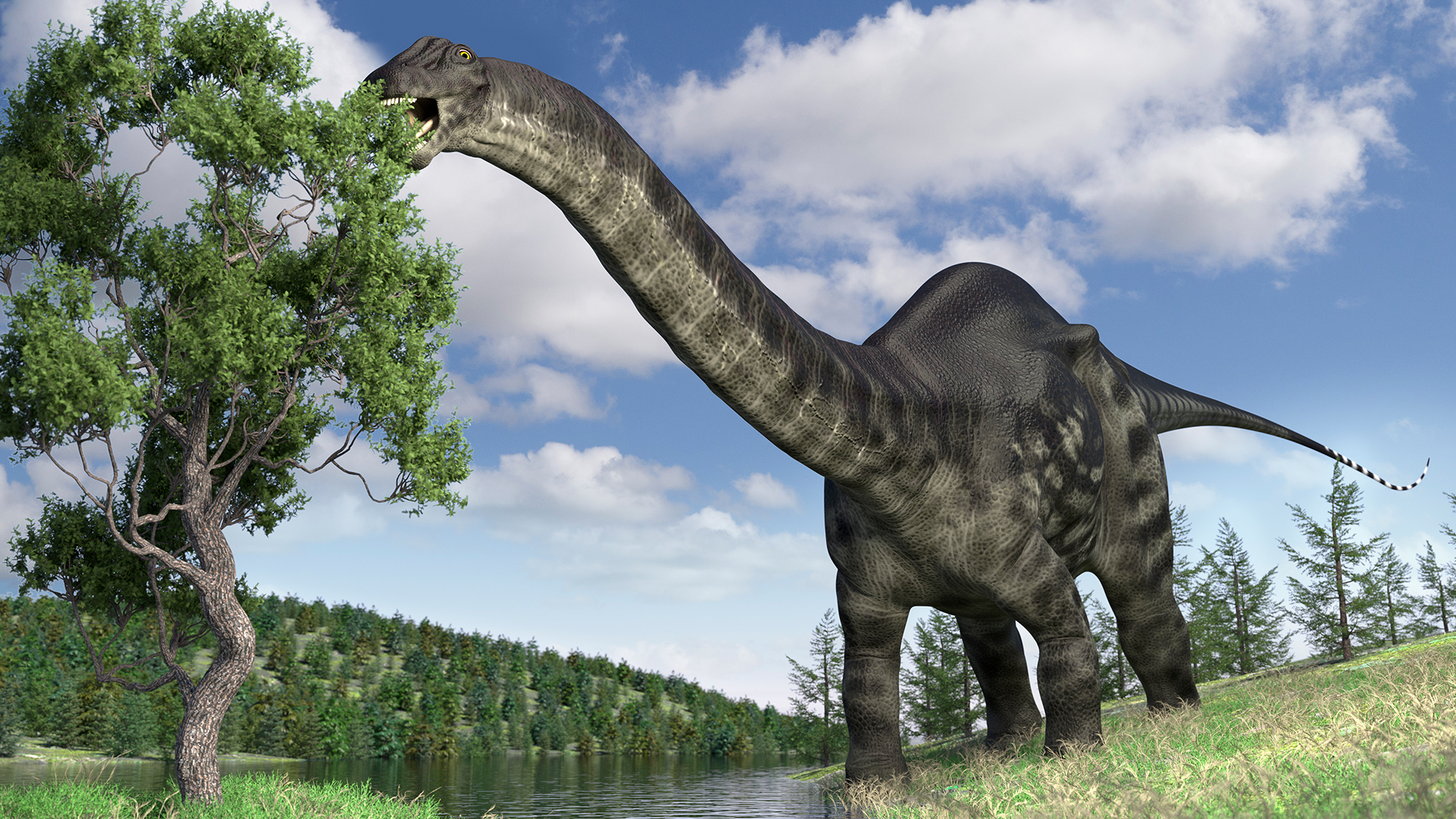
The biggest animals ever to have walked on Earth were the long-necked, long-tailed dinosaurs known as sauropods, and the most famous of these giants was likely Brontosaurus, the "thunder lizard." For more than a century, scientists stopped using the genus name Brontosaurus, but in 2015, researchers suggested it was time to "resurrect" it. So why was Brontosaurus brought back from the dead, so to speak?
The skeleton of a long-necked, long-tailed dinosaur was unearthed in Wyoming by paleontologist Othniel Charles Marsh in 1879, according to the Natural History Museum in London. At the time, scientists dubbed the giant plant eater, which lived during the Jurassic period about 150 million years ago, Brontosaurus excelsus, according to Yale University.
However, in 1903, paleontologist Elmer Riggs found that B. excelsus was very similar to another dinosaur, Apatosaurus ajax, which Marsh discovered in Colorado in 1877, the Natural History Museum noted. The differences between the dinosaurs appeared so minor that scientists decided it was better to place them both in the same genus, or group of species. Because Apatosaurus was named first, the rules of scientific naming kept its name, leading scientists to retire the name Brontosaurus.
Related: What's the world's largest dinosaur?
More than 100 years later, researchers suggested reviving Brontosaurus as its own genus. A 2015 study of sauropods in the journal PeerJ found that the original Apatosaurus and Brontosaurus fossils may have been different enough to classify them as separate groups.
The nearly 300-page study examined 477 physical features of 81 sauropod specimens. The initial aim of the research was to analyze the relationships between the species making up the family of sauropods known as Diplodocidae, which includes Diplodocus, Apatosaurus and, now, Brontosaurus.
All in all, the scientists found that Brontosaurus' neck was higher-set, narrower and smaller than Apatosaurus', study lead author Emanuel Tschopp, a vertebrate paleontologist now at the University of Hamburg in Germany, told Live Science. They suggested three known species of Brontosaurus: B. excelsus, B. parvus and B. yahnahpin.
"They call Brontosaurus 'resurrected,'" Jacques Gauthier, curator of reptiles at the Yale Peabody Museum of Natural History, who did not participate in this study. "I like the ring of that. 'Restored' is a perfectly correct term, but 'resurrected' is the official description of what they have done."
Tschopp noted that they could not have made this discovery 15 or more years before their study; only recently did findings of dinosaurs similar to Apatosaurus and Brontosaurus help reveal what made these groups unique.
It has been nearly a decade since the paper published, and Tschopp noted that "not everybody accepts such proposals immediately. There have been — and still are — researchers who don't trust the results quite yet and continue to use the name Apatosaurus for what I call Brontosaurus."
Mike Taylor, a vertebrate paleontologist at the University of Bristol in England who did not take part in the 2015 study, told Live Science in an email, "you rarely get consensus from paleontologists on these matters, so the answer you get will depend on who you ask. There's been no pushback in the formal literature, but I've heard a bit of grumbling."
Still, to Taylor, the call to "resurrect" Brontosaurus "just feels like a reasonable thing to do." He noted that the 2015 study "made a solid argument that most specialists found pretty persuasive and not especially surprising." Taylor and his colleagues have mentioned B. excelsus and B. parvus in their own studies a number of times.







